From any product or 3D part - Select .
A PPR context with an empty Machining Cell is created. An empty Activities Process Tree opens automatically.
- Create a generic machine or assign a machine from the database.
As soon as a machine is assigned to the Machining Cell, a Part Operation and a Manufacturing Program are created in the Activities Process Tree.
- Alternatively, open an existing Machining Process or PPR context .
 By default,
the
Activities Process Tree opens
automatically.
By default,
the
Activities Process Tree opens
automatically.
Click one of those icons to access the Machining Operations icons:
 Prismatic Machining Operations Prismatic Machining Operations Surface Machining Operations Surface Machining Operations Lathe Machining Operations Lathe Machining Operations Axial Machining Operations Axial Machining Operations
The corresponding Machining Operations icons are displayed in a toolbar
Click any Machining Operation icon and select a Manufacturing Program or another Machining Operation in the Activities Process Tree.
- The dialog box opens at the Geometry
tab
 . .
- This page includes a sensitive icon to help you specify
the geometry to be machined. The red status light on the tab indicates that you must select the
geometry in order to create the operation.
Note:
- Each Machining Operation offers its own sensitive icon. In
addition, the icon is slightly different if you are using a rework
area or a slope area and will have fewer parameters.
- Initial sensitive icon for Sweeping:
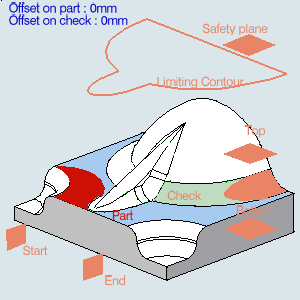
- The same icon with a rework area:
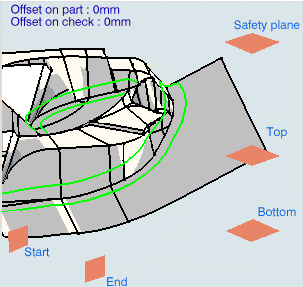
- If you are editing a rework or a slope area, an additional
information is displayed, indicating which type of subset you are
working on. This field is not editable (you can not go from one
subset to another).

Click Info to get details on the parameters that were
defined with the rework area.
Select some geometry.
Only the part to machine is obligatory.
The other geometric components that you can select (but
that are not obligatory) are:
- the check element,
- the safety plane,
- a top plane,
- a bottom plane,
- a start plane,
- an end plane,
- inner points,
- the limiting contour,
- the offset on the part (double-click Offset on
part:0mm),
- the offset on the check element (double-click Offset on
check:0mm).
Refer to each Machining Operation for more details.
The corresponding portion of the icon turns
from red to green. Note:
The status color codes are as follows:
- green (or the current value of Valuated parameters): all the requested data are defined,
- orange ((or the current value of Optional parameters): data are defined, but modifications may be necessary,
- red (or the current value of Required parameters): data definition is required.
- The colors of Valuated parameters, Optional parameters, Required parameters are defined in .
Select a part to machine:
- Click the part definition area:
The dialog box shrinks to let you select one or several bodies.
Double-click anywhere in the authoring windowto revert to the dialog box.
- Use the contextual menu of the part definition area:
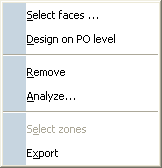
Choose:
- Select faces to select
faces of a body with the face selection toolbar,
- Select zones to select
zones,
- Design on PO
level (available for operation that accept a body as
Part) if you want to use the part defined at the Part Operation
level.
Select another geometry:
- Click a face definition area and use the Faces Selection toolbar,
- Click a contour definition area and use the Edges Selection toolbar,
- Right-click an element definition area: choose Body(ies) in the
contextual menu if you wish to machine a whole part and not just an
area on it, or Select zones if you wish to select zones.
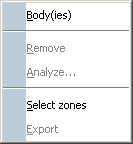
- Choose a pre-defined area like this:

Note:
- You can use Offset Groups and Features when defining geometry.
- The types of selection by default (reached by clicking a sensitive zone) are adapted to the types of the elements to select (bodies for a part to machine, but faces for check elements, for instance).
- The contextual menus vary also with the type of elements to select.
- Define planes by selecting a point or a plane in the authoring window.
- Set an offset on all of the planes using the contextual menu over
each plane. The offset can be either positive or negative and is
previewed in the authoring window before it is validated.
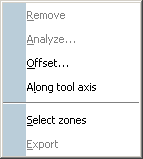

In the case of imposed planes, the offset value applies to
all of the planes you have imposed. The tool passes through all
of the planes defined by the offset and not through the planes that
are imposed. One advantage of this is that if the top surface of
the part is flat and you have defined an Offset on part
of, for example of 1mm, you can define the same offset on the
imposed planes so as to ensure that there will be no residual
material remaining on the top surface.
Use Part autolimit and
the limiting contour individually or together to define the area
you want to machine.
In the pictures:
- the blue outline is the part edge,
- the yellow part is the area that will be machined,
- the black line is the limiting contour:
- if you activate Part autolimit, the
yellow area (shown in the image below) is machined and the tool
contact point stops on the edge of the part (the tool will not go
beyond the edge of the part).
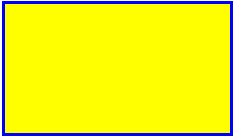
- If you use a limiting contour, only the area inside
the limiting contour is machined.
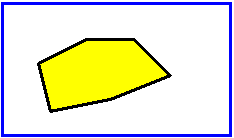
- If you wish to machine the area outside the limiting contour,
choose Outside as the Side to machine.
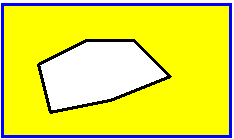
Once the limiting contour is defined, you can also define the
following parameters:
- Stop position:
Specifies
where the tool stops:
- Outside stops the tool outside the limit
line,
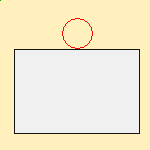
- Inside stops the tool inside the limit line,
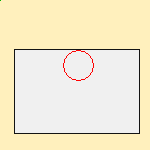
- On stops the tool on the limit line.
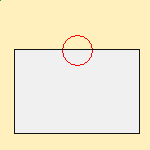
- Offset
: Starting
from the previous position (Inside, Outside,
On) a positive value of the offset increases the area to
machine, a negative value reduce this area:
- Stop position=On, no Offset
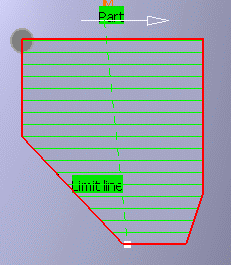
- Stop position=On, Positive Offset
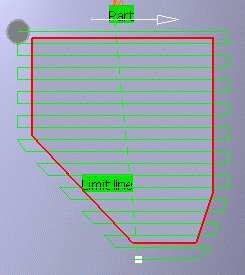
- Stop position=On, Negative Offset
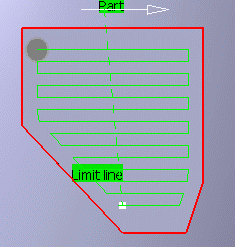
- Stop position=Inside, no Offset
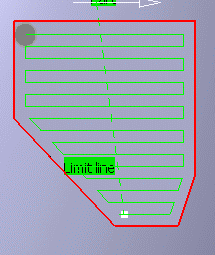
- Stop position=Inside, Positive Offset
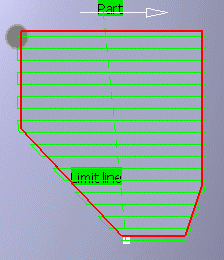
- Stop position=Inside, Negative Offset
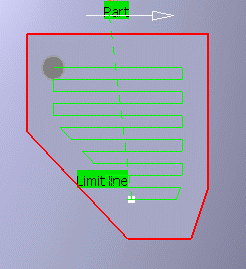
- Stop position=Outside, no Offset
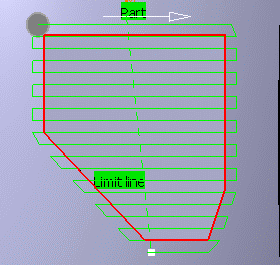
- Stop position=Outside, Positive Offset
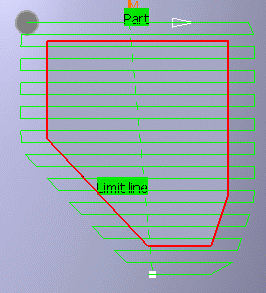
- Stop position=Outside, Negative Offset
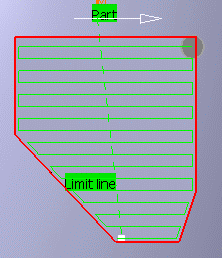
You can now either:
- run the operation on the part,
- store the operation that you have just defined, or
- define other parameters in the machining strategy, tool data,
speeds and rates, or macro data tabs first.
|